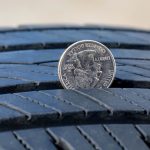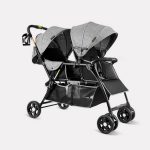
Constipation is a common problem in older adults—1 in 3 people over age 60 experience it. For some, its an occasional nuisance, but many suffer from chronic constipation.
Temporary shifts in your lifestyle, such as travel, variations in your diet, or physical activity (say, if an injury has kept you off your feet), can trigger constipation. But aging itself can lead to bowel muscle changes that slow down the passage of stool or blunt the urge to empty the bowel. And some medications that older adults commonly take—for example, opiates, certain antidepressants, and blood pressure meds like calcium channel blockers—can also be a cause. (It may not be possible to alter your meds, but there are probably other ways to relieve your symptoms.)
Temporary constipation will usually resolve on its own once you get back into your routine. But if you’re often constipated, it’s important to address it. Constipation doesn’t just cause discomfort—it can also signal a more serious concern. For example, it could be caused by a thyroid problem. And a 2023 Nature Scientific Reports study involving 541,000 people ages 60 and older found that constipation was linked with a 96 percent higher risk of hypertension and a 58 percent increased risk of heart attack and other cardiovascular events.
Constipation isn’t always about how often you go—typical regularity ranges from once every three days to as many as three times a day. More reliable signs include frequent hard or lumpy stools, straining to go and spending more than 5 minutes on the commode, and not feeling emptied after you have a bowel movement, says Reezwana Chowdhury, MD, an assistant professor of medicine at Johns Hopkins Medicine in Lutherville, Md. In those cases, try these strategies:
- Keep a targeted food log. Fuglestad recommends noting which foods exacerbate your symptoms. In some cases, something as simple as eliminating or limiting a food can be really beneficial, he says. For example, constipation can be a symptom of lactose intolerance (though diarrhea is a more common reaction).
- Check your fiber intake. Most of us don’t get the daily value for fiber, which is 28 grams. (A small pear or medium sweet potato has about 4 grams, a slice of whole-wheat bread has 2 grams, and a cup of lentil soup has 8 grams.) Increasing your intake can bulk up and soften stool, helping to move it along and out. To avoid overwhelming your GI tract, gradually over a few weeks add more fruits, vegetables, nuts, seeds, whole grains, and beans and lentils, being sure to drink plenty of water as well.
However, fiber isn’t always the answer, Pimentel warns. If you’re straining a lot or if your constipation is medication-related, increasing fiber can produce gas and bloating without moving stool, making you more uncomfortable. - Stay hydrated. “The amount of water you take in is very important in terms of having soft, well-formed bowel movements,” Chowdhury says. Not all of it needs to come from drinking water, though. Other beverages count. Plus, fruits and vegetables have water, so in addition to providing fiber, they can help keep you hydrated.
- Try these foods. Prunes contain sorbitol, a natural sweetener that has a laxative effect. Kiwifruit may help boost healthy gut bacteria, which can speed up stool transit time. For the same reason, kefir, a fermented drink, and yogurt may also help improve symptoms.
- Move more. Exercise is thought to help speed the rate of stool’s passage through the gut. Any kind of moderate exercise is beneficial, Pimentel says.
- Use laxatives the right way. When lifestyle changes aren’t enough to relieve constipation, you can try a laxative. Fiber supplements (i.e., Metamucil or Citrucel) are a good option. They can help soften and bulk up your stools safely. (If you’re often constipated, you may be able to use it indefinitely; check with your doctor.) You can expect results in 12 to 72 hours; if not, try an osmotic laxative, which attracts water into the intestines. It usually causes a bowel movement in two to four days. One of the most effective and least likely to cause cramping and gas is polyethylene glycol, or PEG (MiraLax).
If these steps don’t help, see your doctor. Not only are there a slew of prescription medicines, Chowdhury says, but tests can be done to pinpoint your specific issue, so you can get things moving comfortably again.









